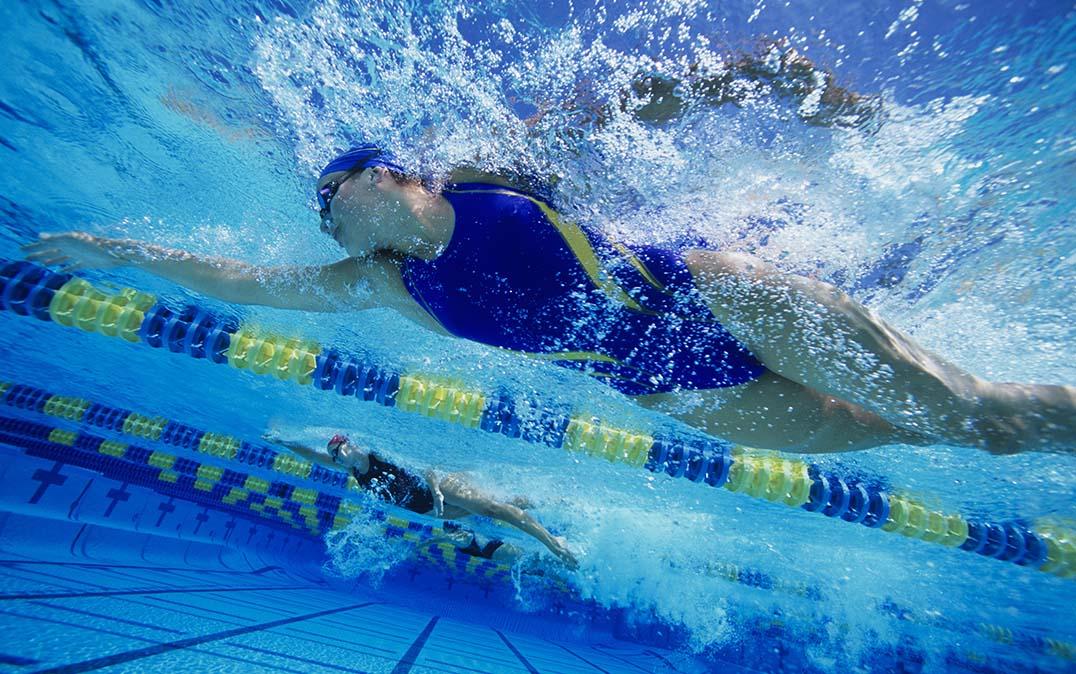Research News
Fancy a Swim?

Image by sirtravelalot/Shutterstock
Researchers at the University of Tsukuba review the scientific literature on the hydrodynamics of swimming and highlight the importance of certain underappreciated techniques, which could assist in the Olympic training of athletes
Tsukuba, Japan—A research team led by the Faculty of Health and Sport Sciences at the University of Tsukuba has reviewed the hydrodynamics literature related to swimming. They identified certain biomechanical aspects, including the relationship between velocity and drag forces, that are not completely understood. This work may help direct future research that could improve the performance of competitive swimmers.
The recent Tokyo Olympics provided impressive feats of speed in the pool, with elite athletes setting many new Olympic and World records. What viewers might not realize, however, is the complexity of the science underlying the sometimes split-second difference between winning a gold medal and going home empty-handed. Biomechanics, the study of motion of the body, and hydrodynamics, the area of physics dealing with fluid flows, contain many questions that remain poorly understood - and swimming fits right at the intersection of these topics. For swimmers who participate in races, even a tiny advance in knowledge can lead to a competitive edge.
Now, a team of researchers led by University of Tsukuba has drawn together research on front crawl swimming biomechanics, focusing on propulsive and resistive forces at different swimming velocities, to form a more complete picture of the relationships between the critical variables. "New knowledge of swimming energetics and fluid mechanics has improved our understanding of factors that determine swimming performance," author Professor Hideki Takagi says.
One of the most important relationships to understand is how resistive forces, like drag when moving through the water, depend on the speed of the swimmer. The researchers looked at recent studies that indicated the resistive force increases in proportion to the cube of the velocity. To compensate, swimmers may try to increase their stroke frequency. However, this has limitations. "We inferred from experimental and simulation studies that there is a maximum frequency beyond which swimmers cannot further increase swimming velocity due to a change in the angle of attack of the hand that reduces its propulsive force," Professor Hideki Takagi explains. "The different balance of forces at different swimming speeds also means that optimal technique may differ between long-distance and short-distance swimming."
The team also identified conflicting evidence over the effectiveness of kicking for increasing the speed of high-velocity front crawl. This indicates an opportunity to further optimize competitive swimming technique if future research can further unpack the relevant hydrodynamic factors.
The researchers found that certain simplified models of swimming often break down when trying to model more realistic conditions. For example, swimmers are not simply 'pushing' or 'pulling' the water to increase their velocity, as some textbooks frame it. This is because the increase in the negative pressure acting on the dorsal side of the hand is crucial for increasing propulsion. Therefore, teaching the proper technique is important, even for phases considered to be non-propulsive.
Original Paper
The work is published in Sports Biomechanics as "How do swimmers control their front crawl swimming velocity? Current knowledge and gaps from hydrodynamic perspectives" (DOI:10.1080/14763141.2021.1959946).
Correspondence
Professor TAKAGI Hideki
Faculty of Health and Sport Sciences, University of Tsukuba
Related Link
Faculty of Health and Sport Sciences


